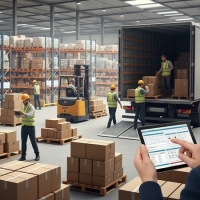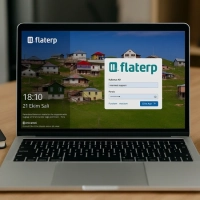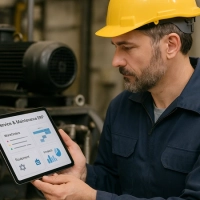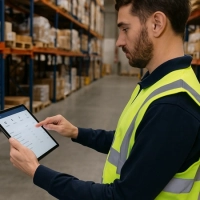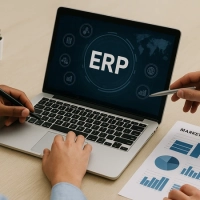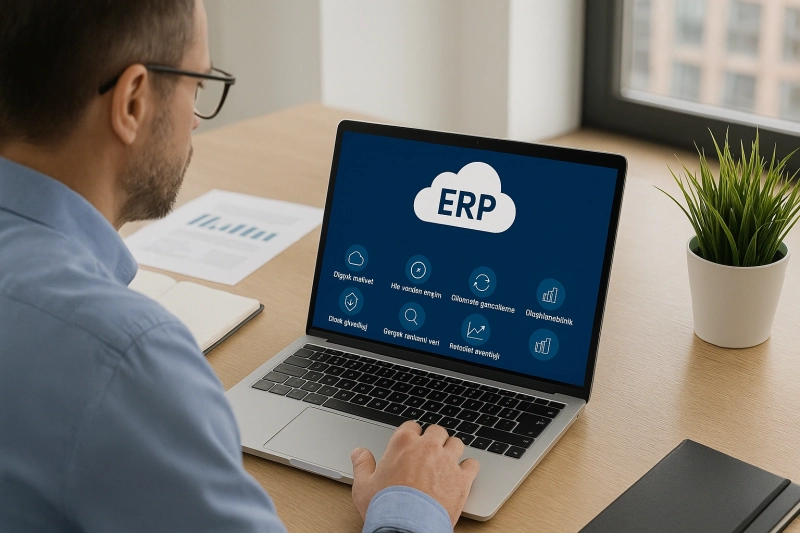
- 1️⃣ Low Start-Up and Operating Costs
- 2️ . Access Anywhere and Anytime: Unlimited Mobility
- 3️⃣ Automatic Updates and Continuous Improvement
- 4️⃣ High Scalability and Flexibility
- 5️ . Data Security, Backup and Disaster Recovery
- 6️ . Real-Time Data and Integrated Processes
- 7️ . Competitive Advantage and Rapid Adaptation
- Comparison: Traditional ERP vs. Cloud ERP
- Conclusion: Investment in the Future is called Flaterp Cloud ERP
Digitalization is now a key driver of competitiveness in every industry. Traditional on-premises ERP systems create scalability challenges due to high hardware investments, complex maintenance, and limited access. This is where cloud-based ERP solutions come into play.
Modern cloud ERP providers like Flaterp offer a secure, flexible, and up-to-date platform accessible over the internet . This model provides businesses not only with cost advantages but also with strategic growth opportunities .
Below, we examine the benefits of Cloud ERP in detail with 7 critical differences .
1️⃣ Low Start-Up and Operating Costs
The biggest burden of traditional ERP solutions is the initial investment costs and ongoing maintenance expenses :
- High hardware investment: Servers, network infrastructure, cooling, energy consumption.
- Licensing and maintenance costs: New license fee with each major update.
- IT department workforce: Extra staff for installation and troubleshooting.
Cloud ERP advantages eliminate this financial burden:
- Providers like Flaterp offer ERP via a SaaS (Software as a Service) model, meaning you pay for what you use .
- Investment cost ceases to be a capital expense (CapEx) and becomes an operating expense (OpEx) .
- There is no need to allocate extra budget for hardware, license, backup and maintenance.
Companies of all sizes, including small and medium-sized enterprises (SMEs), can acquire a strong ERP infrastructure with minimal initial costs .
2️ . Access Anywhere and Anytime: Unlimited Mobility
Traditional ERP systems are often limited to in-office access , but the business world is now shaped by remote work , field operations , and hybrid business models .
Advantages of Flaterp Cloud ERP:
- Instant access from any internet-enabled device (PC, tablet, phone).
- Field teams can instantly update stock, sales or customer information.
- Managers and decision makers have access to real-time reports even when they are outside the office .
- Regardless of time differences, global teams synchronize on a single platform .
Your teams work seamlessly and efficiently, whether in the office or in the field. This is a critical difference, especially for industries that require rapid decision-making.
3️⃣ Automatic Updates and Continuous Improvement
Keeping ERP systems up-to-date is vital for both security and efficiency. Updating traditional systems:
- It is costly and time consuming.
- Requires IT team support.
- It may cause interruption in working hours.
In Cloud ERP, this process is completely automatic :
- Flaterp deploys security patches and new features in the background .
- Every user works with the most current version .
- No extra license or maintenance fees are required.
Your business's systems are always secure and equipped with the latest features , reducing operational risks and allowing you to quickly implement innovations.
4️⃣ High Scalability and Flexibility
Market conditions are changing rapidly: Growth, new branches, seasonal peaks…
In traditional ERP, adding new users, increasing capacity, or expanding modules can take months and is costly .
Flaterp Cloud ERP is:
- Adds/removes users and modules in minutes .
- Resources are automatically scaled according to workload.
- It adapts quickly to seasonal campaigns or project-based workloads.
Your business's growth or temporary needs will not be hampered by infrastructure .
5️ . Data Security, Backup and Disaster Recovery
In the digital age, data security is the foundation of business continuity. In traditional systems:
- Physical damage (fire, flood, hardware failure) can put all data at risk.
- Manual backups are error-prone.
Flaterp Cloud ERP implements enterprise-level security protocols :
- Encryption and multi-layer authentication .
- Automatic backup of data to centers in different geographical locations.
- Full compliance with KVKK and GDPR standards.
- Disaster recovery within minutes .
Even if the physical office or server is damaged, your business will not stop and data loss poses a minimal risk.
6️ . Real-Time Data and Integrated Processes
The real power of ERP is that it combines all the processes of the business in a single database :
- Accounting, finance, purchasing, production, sales and human resources work synchronously on a single platform .
- Data updates are made instantly; there is no information gap between departments.
- Flaterp's advanced reporting tools provide real-time dashboards .
The management team makes faster and more accurate decisions by instantly accessing the correct data.
7️ . Competitive Advantage and Rapid Adaptation
In today's business world, speed wins . With Cloud ERP:
- You can respond faster to new market opportunities.
- You can immediately implement new business models that meet customer demands.
- Thanks to digitalization, your brand image is strengthened.
Your business processes will be more efficient and customer-focused ; you will be one step ahead of your competitors.
Comparison: Traditional ERP vs. Cloud ERP
| Feature | Traditional ERP | Cloud ERP (Flaterp) |
|---|---|---|
| Investment | High server & license costs | Minimum start-up cost |
| Update | Manual and costly | Automatic and free |
| Access | Limited to offices | 24/7 from anywhere |
| Scalability | Difficult and expensive | In minutes |
| Security | Prone to hardware failure | Multi-layer encryption and disaster recovery |
Conclusion: Investment in the Future is called Flaterp Cloud ERP
Cloud ERP is not just software; it is a strategic investment that carries your business into the future .
Thanks to the modern cloud ERP solution offered by Flaterp:
- You can install at low cost ,
- You can access from anywhere ,
- You will grow with a secure and constantly updated infrastructure.











